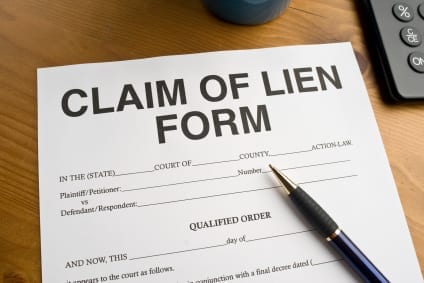
Michigan Construction Lien Law
Michigan provides to contractors, subcontractors, suppliers and laborers a remedy for payment beyond their customer and beyond their contract. This remedy is called a Construction Lien. In order to have the remedy of a Construction Lien, the land must be privately owned (i.e. hotel, office building, restaurant, manufacturing plant) as opposed to land owned by a city, township, village, state, county, public school or college. The privately-owned land must be in Michigan1. The Construction Lien is recorded against the land of the private owner. The contractor, subcontractors, suppliers, and laborers must be able to prove that they performed an improvement2 to the owner’s land.
To establish a Construction Lien, a party must be one of the following:
- Contractor: one who provides an improvement pursuant to a direct contract with the owner or tenant of the land.
- Subcontractor: one who provides labor and material to either a contractor or subcontractor.
- Supplier: one who only provides or rents material or equipment to a contractor or subcontractor that is used in the improvement to the owner’s land. Suppliers to suppliers have no lien rights.
- Laborer: an individual who only performs labor for a contractor or subcontractor.
Before the Owner (or Tenant) begins construction, the Owner must fill out, record3 with the register of deeds for the county where the property being improved is located, and post on the property a document called a Notice of Commencement. The Notice of Commencement will contain the following information that can be used and relied upon by the contractor, subcontractor, supplier or laborer to prepare and record a claim of lien:
- The legal description of the land
- The name and address of the general contractor
- The legal description of the land
- The name and address of Owner’s Designee
Before starting their work, the contractor, subcontractor, supplier, and laborer should obtain a copy of the recorded Notice of Commencement from their customer or the owner, either informally or by a formal certified mail demand.
To establish a lien, Subcontractors, Suppliers and Laborers must perform 5 steps:
- Serve a Notice of Furnishing within 204 days after first labor or material on the General Contractor, and Owners Designee by certified mail (effective upon mailing) or personal delivery.
- Prepare a Proof of Service of Notice of Furnishing. This is a notarized statement saying when the Notice of Furnishing was served. Keep and attach to Claim of Lien when recorded.
- Record the Claim of Lien in the County Register of Deeds where the Owner’s property is located, within 90 calendar days after last labor or material.
- Serve a copy of the recorded Claim of Lien on the Owner’s Designee within 15 days from date of recording by certified mail or personal delivery.
- Prepare Proof of Service of Claim of Lien. Keep and attach to lawsuit if filed.
To establish a lien, a Contractor must perform only 3 steps5
- Record a Claim of Lien in the County Register of Deeds where the Owner’s property is located with 90 calendar days after last labor or material. Before recording Claim, give the Owner a final Sworn Statement.
- Serve a copy of the recorded Claim of Lien on the Owner’s Designee within 15 days from date of recording by certified mail or personal delivery.
- Prepare Proof of Service of Claim of Lien. Keep and attach to lawsuit if filed.
In all cases, the recorded Claim of Lien has a one-year life span; meaning that a lawsuit to enforce or foreclose the lien must be filed within one year after the date the Claim of Lien is recorded. If no lawsuit is filed within the one year, the lien claim dies. The lawsuit to enforce the lien must have attached the Proof of Service of the Claim of Lien, and a Sworn Statement and must join all other lien and mortgage holders. If successful on the lien claim, the lien claimant can recover reasonable attorney fees and costs.
Resources
The Construction Association of Michigan hosts classes designed to educate member firms about the complexities of lien law and payment bonds. Click here for upcoming classes.
- Each state has its own lien law.
- The improvement may be new construction, renovation, remodeling or service work – whether residential, commercial, industrial or office.
- The Owner of a residential construction lien (i.e. home) need not record the Notice of Commencement.
- Laborers must serve the Notice of Furnishing within 30 days after first work
- Contractors do not give a Notice of Furnishing, they receive them.
Note: This summary is not intended to be an all inclusive discussion of Michigan’s construction or mechanic’s lien laws, but does include basic provisions.

About the Author
Mr. Burnstein is the dean of construction law in the state of Michigan. He is an expert in Construction Lien Law and Payment Bonds, and teaches classes and workshops at the Construction Association of Michigan and throughout the state on the subjects.
Mr. Burnstein has been recognized by his peers in construction law in Best Lawyers of America from 2010-2020, Michigan Super Lawyers from 2010-2019.
Recent Posts
-
Important Update: Earned Sick Time Notice & Posting Requirements for Employers
Construction Law
-
CAM NewsBriefs – March 31, 2025
eNews
-
CAM NewsBriefs – March 14, 2025
eNews
-
CAM Magazine's March 2025 Issue Is Ready to View
CAM Magazine
-
CAM NewsBriefs – February 28, 2025
eNews
-
Introducing CAMPRO, A Level-Funded Health Plan
Member Benefit